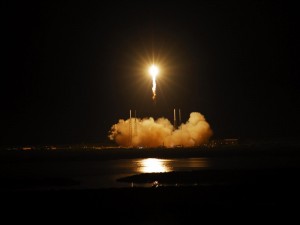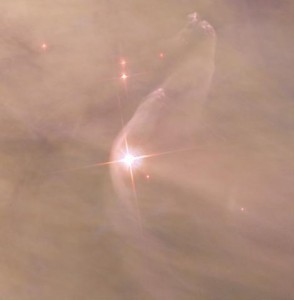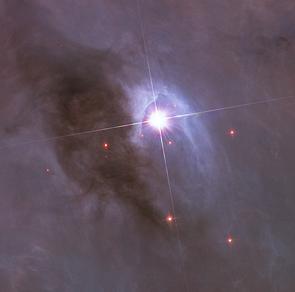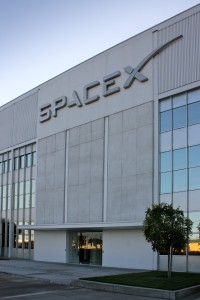Archive for the ‘Space News’ Category
Using 3-D Printers to Make Rocket Parts? Done.
Yes, according to this July 24th article on NASA’s website, not only can they manufacture injectors using 3-D printers at a substantially cheaper cost than by traditional methods, but the 3-D printed parts actually perform better. You can get all the juicy details from the NASA article – as usual, I’d like to talk about the broader implications. But first, how about a video of the part at work, enduring the 6,000 degree Fahrenheit temperatures it needs to:
Sometimes, NASA seems to be going at a snail’s pace that drives me nuts, but it looks like they’re on the cutting edge here, along with SpaceX, which is also using 3-D printers to make their parts.
Of course, every science fiction enthusiast has to be thinking replicators, right? And this is definitely going to be another case of science fiction becoming science fact, but let’s think about what this means for the next generation or so without getting all Star Trek about it. Think about Mars, or any future space base. Now, if something goes wrong, they won’t need the part manufactured on Earth and set on a potentially months-long delay. Instead, they’ll be taking a 3-D printer and some raw materials with them, and if they need to replace a part, they can manufacture it on-site without delay. This dramatically reduces the risks to any people we choose to send out there – especially for those sent to Mars.
NASA Orion Spacecraft Parachute Test
In case you missed it, this is NASA’s livestream of the test of the Orion parachute system by dropping it from 35,000 feet on July 24th, 2013:
Just a warning: the sound quality is absolutely horrendous. People commenting on the livestream suggested that someone connected to the Google Hangout left their mike on. Anyway, if Orion ends up going to Mars, then this would be the equivalent to watching the parachute tests on the Apollo CSM – not to be missed.
I’ll do a write-up with more details of the Orion spacecraft soon.
SpaceX’s Merlin 1D Test-Firing
The Merlin 1D engine will be used on the Falcon 9 and Falcon Heavy rockets to boost heavy loads into orbit. It’s at the very heart of SpaceX‘s most ambitious aspirations (so far), and I think the video of the test speaks for itself.
Congratulations to the SpaceX team. It looks like their hard work is really paying off, and I’m eager to see what they manage to do next.
SpaceX Falcon 9 Launch Successful
I’ll post more about it once the Dragon completes its mission and we find out whether it met all the mission requirements. For now, congratulations to the SpaceX team for the quick turnaround. Here’s a picture of this morning’s launch from NASA:
If the mission is successful, we will be in a new era of space flight. Some people are already declaring the start of the new era with the launch, but that’s a bit premature – it actually has to do some work up there. As you might already know from reading my other articles, I’m skeptical about private industry’s vision and ability to think big, but any space flight is better than none.
No Bow Shock?
It was sort of a romantic notion, I guess: the idea that, as the solar system moves through the interstellar medium, the interaction between the outward flowing solar wind and the medium creates shockwave. Makes us seem like a missile traveling through space. At least, it makes for a pretty picture, as these examples around other stars shows:
Well, no such luck. It turns out our velocity vector isn’t in quite the right direction and its magnitude with respect to the interstellar medium isn’t great enough to produce a bow shock. Sucks, doesn’t it? I mean, we knew our Sun was pretty average as far as stars come, but give it a bow shock and, I don’t know, it sort of adds character. Now, we’re just back to being boring. Alien astronomers probably don’t even give our Sun a second look. And this was what was responsible for bursting our bubble:
SpaceX Launch Delayed . . . Again
So, crossing your finger really doesn’t work, though I guess we should do some double-blind trials just to make sure.
The launch of SpaceX‘s Falcon 9/Dragon flight to the ISS went all the way to ignition early this morning, but engine five had abnormally high chamber pressure readings on lighting, requiring a computerized abort. SpaceX confirmed that this was not the result of a sensor malfunction nor any computer glitch. The fuel valve was apparently operating normally, so we’re still waiting to find out exactly what went wrong.
SpaceX noted that while a failure of two engines during flight would not cause a failure, all nine engines have to be operational for a successful liftoff. Pressure problems have occurred in testing and during the first demonstration flight as well, though in the first test the pressure was off by a narrower margin, suggesting a different fault.
SpaceX’s Rendevous with the ISS
Space X’s COTS (Commercial Orbital Transportation Services) Demo Flight 2 is scheduled for Saturday. If the demonstration completes all the objectives set forth by NASA, the Falcon-9/Dragon system will be certified for regular cargo deliveries to the International Space Station. In other words, the United States will finally have a private sector replacement for the Space Shuttle‘s cargo delivery function.
While we’re all hopeful for success in this new phase in space exploration, I wonder why we couldn’t have had a proven system in place earlier, before the retirement of the Shuttle. Why are we still dependent on Russia to get our personnel to and from the station? It feels like we’ve set ourselves back, as if it’s 1959 again and we’re once again behind the Russians. I hope we can close the gap again quickly.



